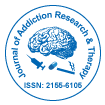Unsere Gruppe organisiert über 3000 globale Konferenzreihen Jährliche Veranstaltungen in den USA, Europa und anderen Ländern. Asien mit Unterstützung von 1000 weiteren wissenschaftlichen Gesellschaften und veröffentlicht über 700 Open Access Zeitschriften, die über 50.000 bedeutende Persönlichkeiten und renommierte Wissenschaftler als Redaktionsmitglieder enthalten.
Open-Access-Zeitschriften gewinnen mehr Leser und Zitierungen
700 Zeitschriften und 15.000.000 Leser Jede Zeitschrift erhält mehr als 25.000 Leser
Indiziert in
- CAS-Quellenindex (CASSI)
- Index Copernicus
- Google Scholar
- Sherpa Romeo
- Öffnen Sie das J-Tor
- Genamics JournalSeek
- Akademische Schlüssel
- JournalTOCs
- SafetyLit
- Nationale Wissensinfrastruktur Chinas (CNKI)
- Elektronische Zeitschriftenbibliothek
- RefSeek
- Hamdard-Universität
- EBSCO AZ
- OCLC – WorldCat
- SWB Online-Katalog
- Virtuelle Bibliothek für Biologie (vifabio)
- Publons
- Genfer Stiftung für medizinische Ausbildung und Forschung
- Euro-Pub
- ICMJE
Nützliche Links
Open-Access-Zeitschriften
Teile diese Seite
Abstrakt
Factors Affecting Tendency for Drug Abuse in People Attending Addiction Treatment Centres: A Quantitative Content Analysis
Zivar Taheri, Mehdi Amiri, Mohammadali Hosseini, Mohaddeseh Mohsenpour and Patricia Merry Davidson
Background: Addiction is an unpleasant social phenomenon that leaves heavy destructive consequences, like a storm, for the addict, their family and community. Studies show that addiction has a growing trend in Iran. The purpose of this study was to identify factors affecting tendency for drug abuse.
Materials: This quantitative content analysis study was conducted on 32 people attending an addiction treatment centre in Shahin Shahr city, Iran in 2014. Participants were selected by purposive method and data were collected through interviews. After converting to text, content of the interviews was analysed by quantitative content analysis method.
Results: Data are presented in four main categories with the highest repetition: (1) environmental factors (friendly gatherings, communicating with drug users), (2) family factors (a drug user in the family, loneliness and separation from family, family problems and disputes), (3) individual factors (attracting the opposite sex, wealth, being athlete, curiosity and receiving energy, youth ignorance, sickness), and (4) social factors (having a hard job, unemployment, lack of recreation, convenient access to drugs).
Conclusion: The most prevalent factors affecting tendency for drug abuse included environmental and family factors. So it is necessary to perform preventive measures in the community by developing related education in families, schools and universities so that tendency for drug abuse is reduced in Iran.
Zeitschriften nach Themen
- Allgemeine Wissenschaft
- Biochemie
- Chemie
- Genetik und Molekularbiologie
- Geologie und Geowissenschaften
- Immunologie und Mikrobiologie
- Klinische Wissenschaften
- Krankenpflege und Gesundheitsfürsorge
- Landwirtschaft und Aquakultur
- Lebensmittel & Ernährung
- Maschinenbau
- Materialwissenschaften
- Medizinische Wissenschaften
- Pharmazeutische Wissenschaften
- Physik
- Sozial- und Politikwissenschaften
- Umweltwissenschaften
- Veterinärwissenschaften
Klinische und medizinische Fachzeitschriften
- Anästhesiologie
- Augenheilkunde
- Betrieb
- Dermatologie
- Diabetes und Endokrinologie
- Gastroenterologie
- Genetik
- Gesundheitspflege
- Immunologie
- Infektionskrankheiten
- Kardiologie
- Klinische Forschung
- Medizin
- Mikrobiologie
- Molekularbiologie
- Neurologie
- Onkologie
- Pädiatrie
- Pathologie
- Pflege
- Toxikologie
- Zahnheilkunde

 English
English  Spanish
Spanish  Chinese
Chinese  Russian
Russian  French
French  Japanese
Japanese  Portuguese
Portuguese  Hindi
Hindi